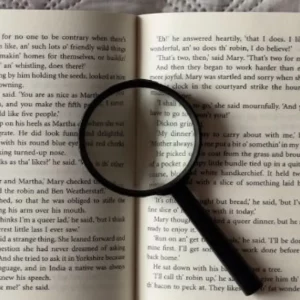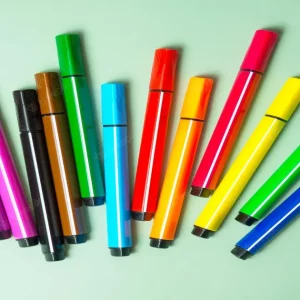A drawing tablet is used to input handwritten or drawn graphics into a computer. An iPad is a tablet computer designed and marketed by Apple. So, what’s the difference between a drawing Drawing Tablet Vs Ipad? Let’s compare and find out!

What are iPads?
The iPad offers everyday functionality and powerful hardware that allows you to complete daily tasks. You can access a wide range of video and gaming content from your iPad. An iPad is an excellent choice if you are new to technology or want a simple device with lots of features.
iPads aren’t just for those who want to have fun. Apple has created devices that can be used for work and play with newer technology.
The iPad is known for producing high-quality illustrations that can be printed on the move. You only need to invest in the iPad, Apple Pencil, and some design software. The rest is easy.
Your iPad can be used as a sketchbook. You can erase, undo, scale, or share it with others. The price range for this iPad is $400 to $1900, depending on the model.
Pros and Cons
Pros:
User-friendly apps
There are many excellent iPad drawing apps like Procreate. These apps are incredibly user-friendly. You can get the most from them by reading their tutorials and purchasing unique add-ons such as brushes.
Portability
This is one of many benefits of owning an iPad. You don’t have to connect it to a computer to use an iPad. You will be able to draw wherever you go with an iPad.
Versatility
The iPad can be used for many other things than drawing. It can also be used for almost everything you would do on a computer.
Cons:
Pencil sensitivity
The iPad doesn’t provide much information about how sensitive it is to different brush strokes, making it difficult for artists who want to use it.

What Are Drawing Tablets?
An iPad may be the best option for you if you are looking for something with more creative freedom. The right tools are essential for modern artists to create compelling and thought-provoking art.
A tilt-sensitive pen and an anti-glare display are important for your pen strokes. Drawing tablets should be able to match your creativity and allow you to explore new ideas.
A quality tablet for drawing requires vibrance. An artist must look for tablets compatible with various design software such as editing, 3D modeling, or digital painting. A tablet will not get you far if you cannot do anything with your artwork.
Pros and Cons
Pros:
Pressure Sensitivity & Accuracy
The pressure detection system allows you to distinguish between different pen strokes on your drawing tablet, such as light and heavy. This will enable you to draw more accurately on paper.
You can customize
Many drawing tablets can be used with any design software.
Wireless connection
Wireless connectivity is a feature that most tablets now have. This makes it easy to draw and move around your tablet.
Cons:
Not flexible
While drawing tablets are great for creating artwork and valuable for other purposes, they don’t work well.

Drawing Tablet Vs Ipad: What Are the Main Differences?
It can be challenging to find the right tablet for digital drawing. There are so many options. Apple, with its super-popular iPad series, will be my focus. Wacom also has models. These are great picks, and I’ve had a productive experience with both.
While the iPad is an excellent option for digital art, Wacom pen tablets and iPad are entirely different.
You can draw directly on an iPad with an Apple pencil. Similar to how you draw with pen and paper. It’s easy to see what you have drawn. It’s intuitive and easy to use.
An iPad does not require a connection to any computer or other device. It is easy to pick up and use; turn it on, and begin drawing. It can be used as a portable workstation. You can take it anywhere you want to remove it.
Wacom tablet is not compatible with iPad. The tablet replaces your computer mouse with a tablet pad with a stylus pen. The tablet is held in your hand, and you can draw on the computer screen.
If you don’t have any previous experience with these tools, it may take some time for you to get used to them. This is an option if you have a specific place to work and aren’t constantly moving around.
Can an Ipad Replace a Drawing Tablet?

Ipad Vs Drawing Tablet: Portability
This is one of many benefits of owning an iPad. You don’t have to connect it to a computer to use an iPad. You will be able to draw wherever you go with an iPad.
Even the most prominent iPad Pro (12,9″) screen is portable. It can be carried in a backpack, so you can take it to the park or café and continue drawing while sipping your favorite coffee.
The battery life of the iPad is perfect. You can draw for several hours without having to plug it in.
A drawing tablet must be connected to another device such as a computer or laptop. You can’t use your drawing tablet by itself. It isn’t easy to use a drawing tablet when you are moving.
Models such as Wacom Cintiq and XP-pen Artist Series must also be connected to a computer to mirror the screen. It is a display. It does not have a battery or processing power.
Ipad Vs Tablet for Drawing: Functionality
Your iPad Pro doesn’t just have to be used for drawing. The iPad Pro is also a great all-in-one tool. You can use it to do many other things, such as surfing the internet, playing video games, and watching movies.
It can be used in many other situations, including checking email, sharing images on social media, editing videos, and much more.
While drawing tablets are great for creating artwork and valuable for other purposes, they don’t work well.
Ipad Vs Drawing Tablet for Art: Size
There are many sizes of the Apple iPad. The iPad Mini has a 7.9-inch display. The iPad Pro, which has a 12.9-inch screen, is the giant iPad. Even the iPad Pro’s 12.9-inch screen may not be enough for you if you are used to drawing on large surfaces.
Drawing tablets can be as small as 12 inches or as large as 32 inches. This gives you a wide range of options. A large drawing tablet is a good choice if you prefer to work on large surfaces. A large drawing tablet has the advantage of working in greater detail.
Drawing Tablet Vs. Ipad: Sensitivity to Pencil and Stylus
A drawing tablet usually comes with a pen, so there is no need to purchase one separately. The pen tips can be removed.
Most styluses for drawing tablets are now passive and don’t require a battery. They use electromagnetic waves to transfer energy and data from the tablet and don’t need to be charged.
Sensitivity levels are the levels at which a stylus can recognize different pressure levels. Using sensitivity levels, you have more control over how much pressure your pen strokes are applying.
There is no universal standard for how sensitive a stylus should be. There is no consensus among artists on what level of sensitivity is considered good enough. Some artists can handle 2048 levels of sensitivity.
XP Pen’s drawing tablet is capable of displaying an astonishing 8,192 levels. Many artists have become accustomed to this level and will not tolerate anything less.
The Apple Pencil is thin and almost looks like a pencil. It has a battery that needs to be charged, and the Apple Pencils can also be purchased separately to increase the price.
Apple does not disclose the sensitivity levels of its Apple Pencil models, which is frustrating. However, artists have reported that it is about as sensitive to Wacom Cintiq drawing tablets.
The second-generation Apple Pencil is also very similar insensitivity, although it only works with the iPad Pro.
Drawing Tablet and Ipad: Software
The iPad does not run the standard Apple OS software. It only runs software designed explicitly for iPad tablets.
You can install many great apps on the iPad. You can install Procreate, Ibis paint and many other apps. Many options are available, regardless of whether you want to paint, draw or make cool designs.
But you still may lack some programs. Adobe Creative Cloud is a great option, as many are industry standards.
Adobe’s Illustrator Draw and Photoshop Sketch versions for iPad are different from their desktop counterparts.
These applications are not meant to be used in a production environment.
A professional drawing tablet can be used with a Windows PC or Mac to run high-end graphics software. This includes everything from architecture to fashion design to animating.
They are compatible with every drawing and modeling software, including Photoshop, Krita, Sketchbook, and Sketchbook for creating digital art and full-fledged 3D modeling apps like Maya, Zbrush, or Cinema 4D.
While an iPad can assist with certain aspects of the workflow, it is more helpful in creating fun artwork than anything serious.
Drawing Tablet or Ipad: Programmable buttons
No matter how large or expensive the tablet, professional drawing tablets come with a range of customizable functions that can be customized to perform various functions.
One button can achieve an ‘undo’ function, while another can switch between brushes. This is the core of drawing on a tablet.
This cornerstone is missing from the Apple iPad Pro. To switch between tools, you can only double-tap the Apple Pencil.
It defaults to switching between eraser and pen, but you can change it to do something else. This is all you can do. This will severely impede your workflow if you can’t use shortcut buttons.
Drawing Tablet Versus Ipad: Price tag
The iPad is more expensive than the Wacom Cintiq / XP Pen Artist screen graphics tablets. It is an excellent investment for your digital art career, but it might not be suitable for you, especially in the beginning.
These tablets are great for artists who are just starting or those with a lot of experience. They are wireless and have an internal battery.
You can find a drawing tablet that has a screen on the market. An XP Pen Artist 12 Pro can be purchased for less than $250.
A Digital pen tablet is a great way to invest in your creative career if you already own a laptop or computer.

User experience
I use the iPad pro-small, XP Pen Innovator 16 medium, and XP Pen Artist 24 Pro large screen drawing tablet. iPad Pro is great for drawing and sketching on the move. I also use the sizeable XP-Pen screen tablet for professional work.
The iPad is not suited for large paintings or illustrations that I have to do. While the iPad is more convenient for quick sketches, my computer has more power.
I also use many of the layers in photoshop that aren’t available in procreate. Smart objects and many other functions that the product does not yet have. ).
I work at a desk most of the day, so I want to be away from my desk as much as possible when I get home. I will often draw on my iPad while I sleep or lounge on the couch.
Digital art can be done using touch/gesture. Zoom in and out using a pinch, pan and rotate your canvas as you wish. To undo or redo, tap with two fingers. Procreate offers many more gestures that will speed up your workflow.
Desktop-screen tablets are becoming less cluttered and require fewer cables. All you need is a USB C (or lightning, depending on the model) and a USB-C line to charge your iPad.
XP-Pen Artis 24 Pro is the best. I need to have a large 23.8-inch screen to display accurate color 2K images. It’s a huge advantage not to have to zoom in and to be able to draw more from your shoulder.
Because it detects my light strokes, the pressure sensitivity allows me to maintain a good posture. This is very important when I am drawing for extended periods.
Programmable controls were the key to my productivity increase of at least 50%.
Conclusion
A drawing tablet can be an excellent investment for any artist or graphic designer. They offer a natural feel and a much more authentic experience than a mouse and keyboard. Since the tablet is used much like a pen and paper, it’s often more portable than a mouse.
You can take your tablet to the field where you can write, draw, or paint, just like using a pen and paper. On the other hand, if you are looking for a computer that can help improve your creativity, then there is no way you can go wrong with an iPad.









